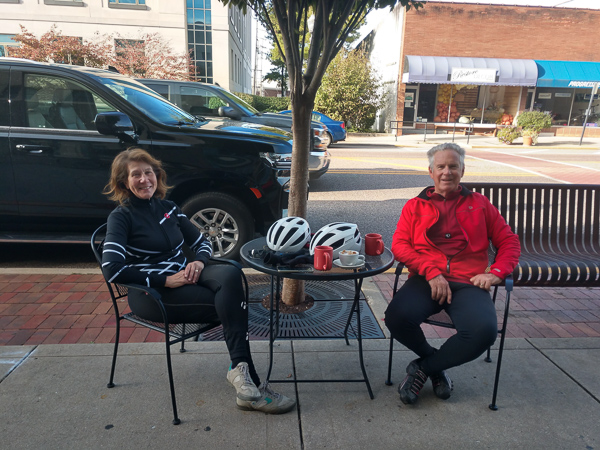A tale of two towns……..
My last installment left us pulling into Brown County State Park in Indiana. This park, like Turkey Run, was also showing signs of things to come. The place has over 600 campsites with only three or four in use. It was midweek but I expected there to be a few more retired couples getting some RV time in before the families arrive. I suspect the news of the spreading virus has kept people away. We picked a level spot in the Buffalo Ridge loop. Was not hard to back into but if the adjoining sites were filled it would have been trying. As I mentioned before, there was a required wiring repair before the electronic leveling system would function but fortunately the rain held off for a little while the Princess supervised the work.
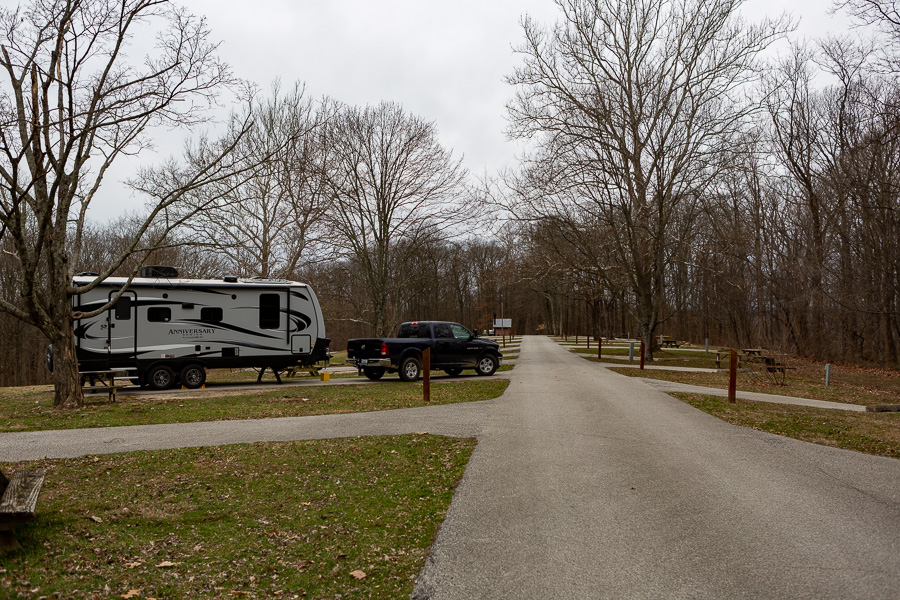
The next morning, after a long night of storms, the trails were too muddy to enjoy so we explored nearby Nashville. Not to be confused with the other Nashville of country music fame. As happens so often on our travels, we were pleasantly surprised by the quaint tourist town with the required t-shirt shops and a few very nice art galleries and coffee shops. We were impressed with the Brown County Artist Guild, Gallery of Fine Arts, Inc. founded in 1925. There is both a permanent collection donated by Marie Goth in 1975 and a large collection of contemporary work by current members of the Guild.
Another highlight of the day was watching a craftsman create delicate flowers from blown glass. With the town devoid of tourist we were able to have a long conversation with Jim Lawrence of the Lawrence Family Glass Blowers; Inc. Jim and his twin brother John learned their craft from their father. The family has been selling their work in Nashville since 1967. Nashville turned out to be a very good diversion on a wet early spring day.
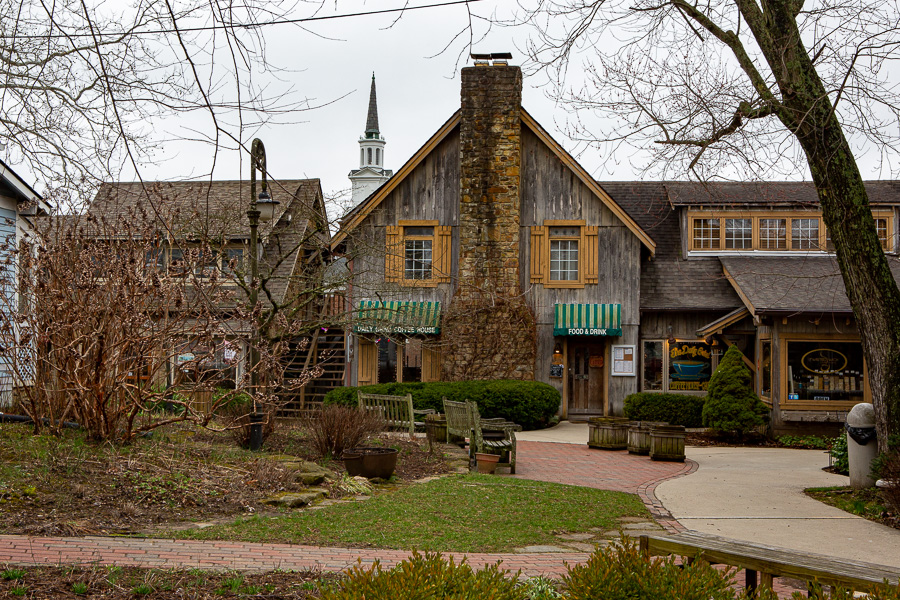

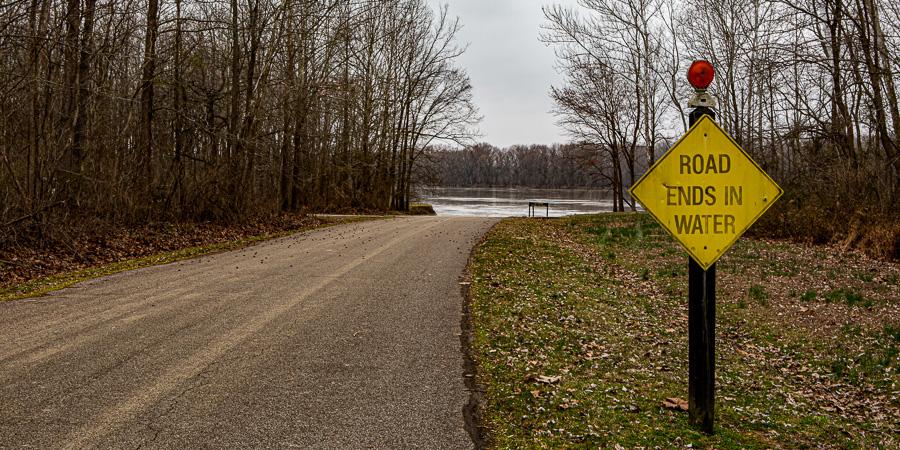
Following Nashville we moved on to New Harmony, Indiana which was another 150 miles down the road on the Wabash River. About 10 miles out of town is Harmonie State Park where we parked the rig for another two nights. I have known about New Harmony for many years and it has been on a loose list of places to visit but never quite got around to it. The town is just not close to anything, but is within a day trip distance from St Louis or Indianapolis. Oddly, a local RV dealer sometimes uses an antidote about his mother camping in New Harmonie as part of his radio advertisements so I have been reminded every spring that I had still not made a visit.
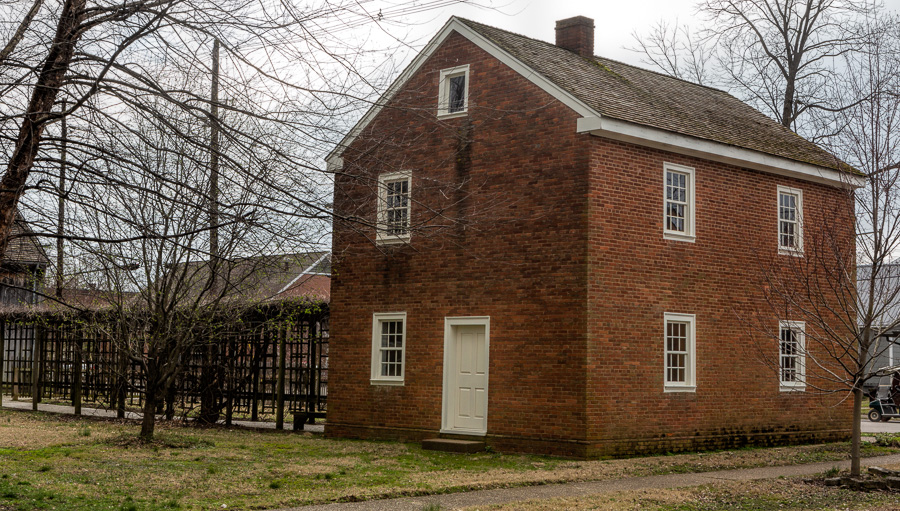
Wolfe House, ca 1819 New Harmony, IN. The entry door of homes from built between 1814 and 1824 was located on the side of the house with the garden. I was told this design was used because all of the streets were dirt which turned into mud a lot of the year. A side entry allowed people to clean their shoes in the garden before entry.
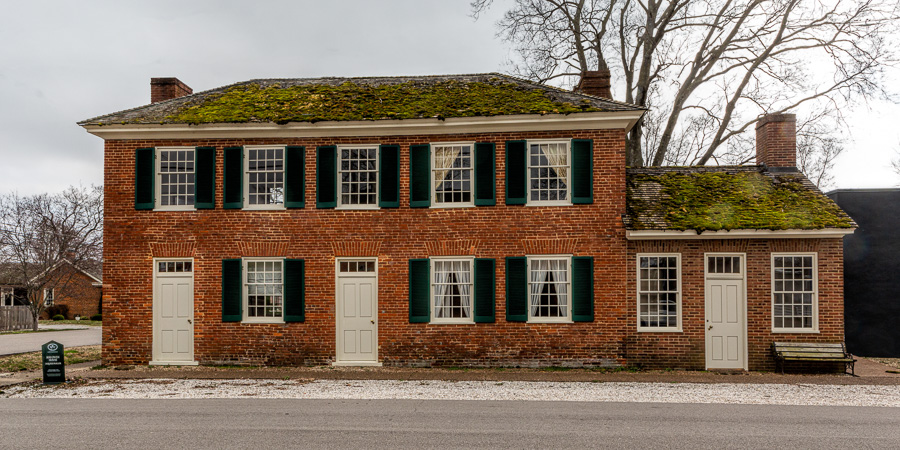
While both Nashville and New Harmony are both historic towns, they are nothing alike. New Harmony was founded in 1814 by the Hermonie Society led by George Rapp. His 800 German followers, seeking religious freedom, left Europe to settle first in Pennsylvania. About ten years later, George Rapp and his followers moved on to the Indiana Territory to await for the second coming of Jesus Christ which Rapp believed was eminent. The Hermonie Society then set out to form a perfect community in a wilderness setting. Within ten years this group built over 180 structures to house their followers and their successful businesses. This group shipped goods all over the United States and Europe. The Harmonie Society had a fatal flaw that affected long term sustainability, they believed in celibate marriages. Not a strong point for recruitment nor community growth. In 1824 Rapp sold the town to Robert Owen who was very successful business man and who had his own dreams of a perfect Utopian society. He believed in universal education and social equality between man and women. Women of the community were able to vote and he restricted the working hours of children so that they could go to school.
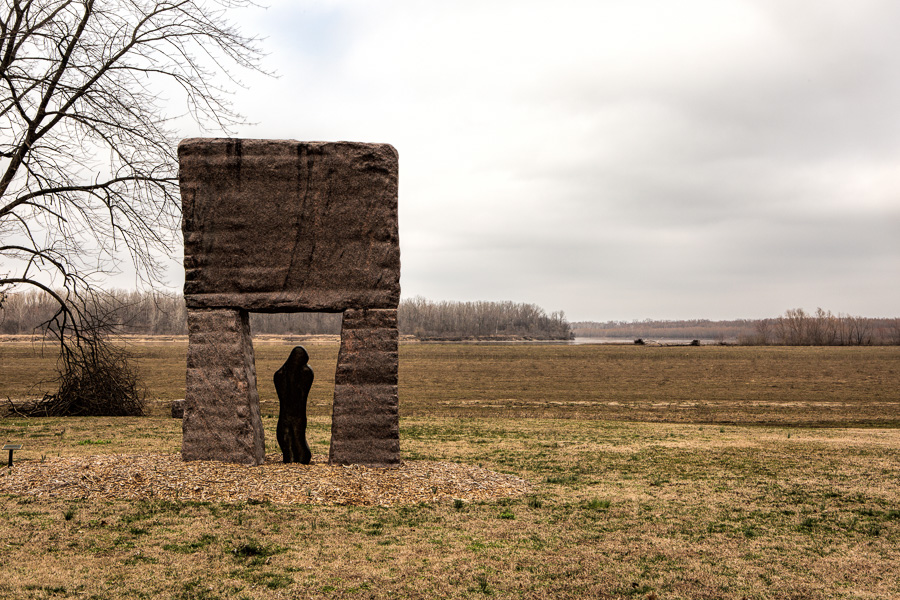
He recruited artists and well know scholars to populate the town but no one was recruited to actually carry on the business developed by George Rapp. This approach did not work out well long term either. But the two groups left unique architecture and a culture of art and sciences. There is a beautiful modern visitors center that provides tours of the village and instruction in historical background. If you go a must stop is the Roofless Church. A meticulously kept walled garden, built in 1959, with an unusual dome as the center piece. It is simple and serene. There are sections for private reflection as well as a place for larger gatherings.
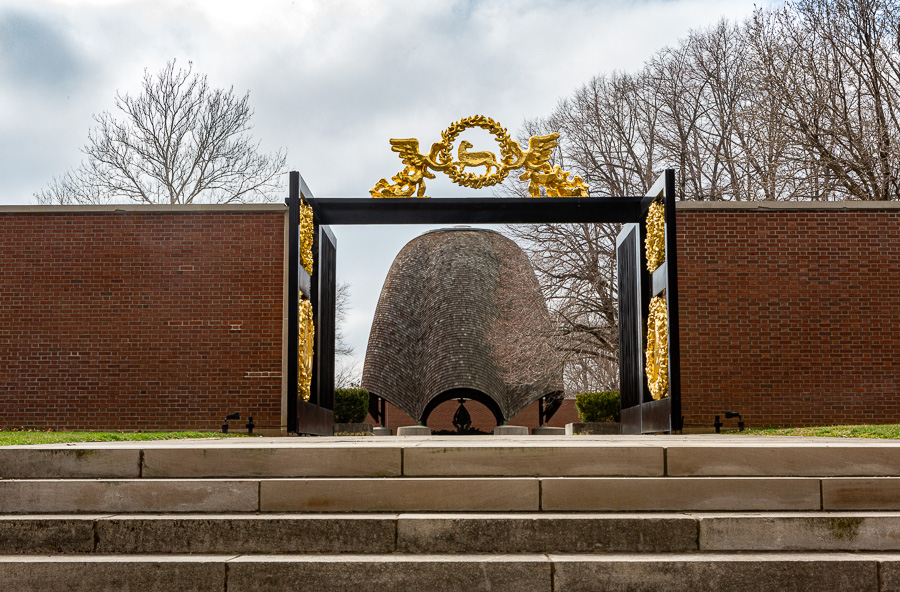
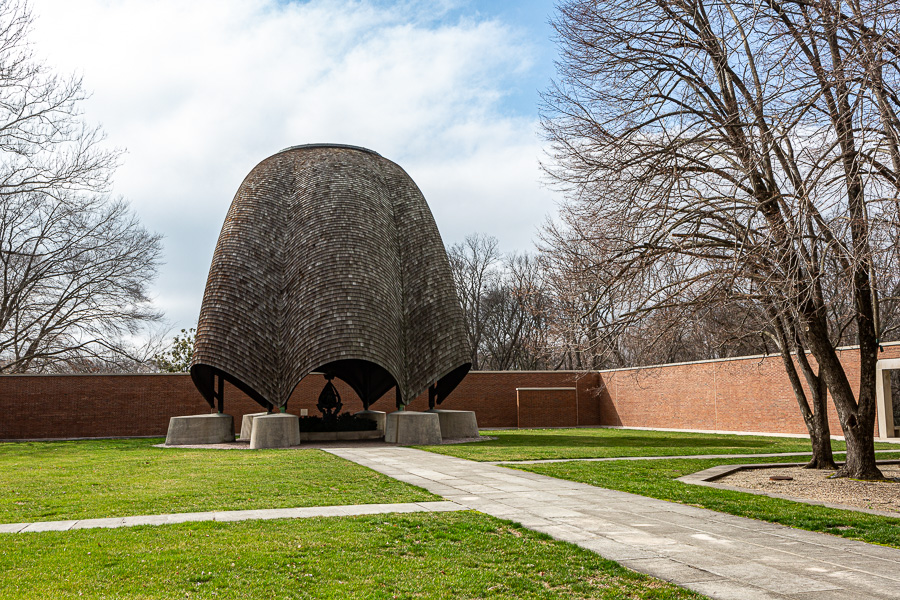
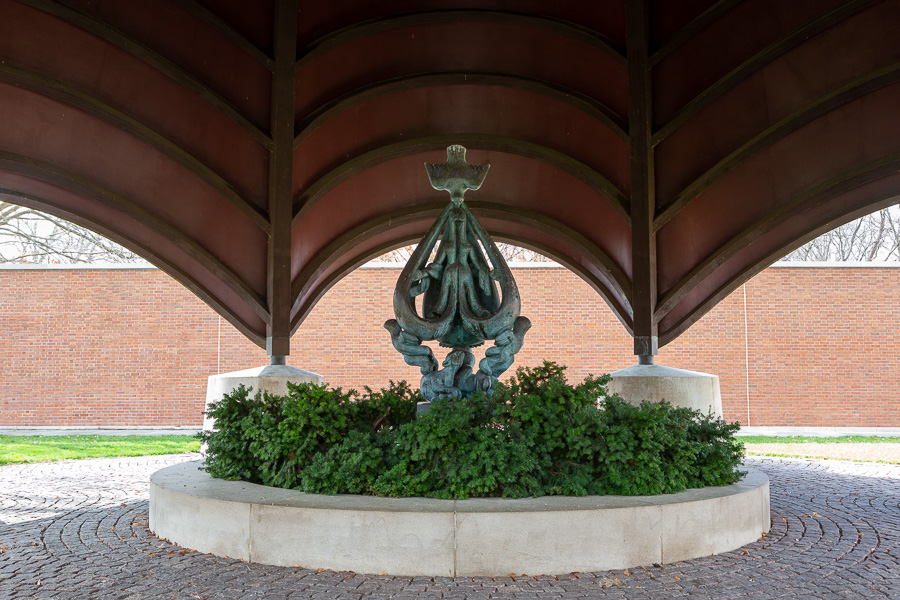
We had planned to go back in early April to see the blooming fruit trees and the gardens as the leaves start to come out. Does not look like that will happen this year but it is again on my list of things to see.
Dennis




